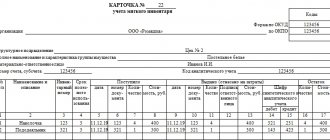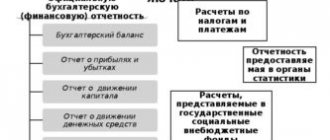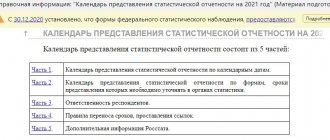Residents of the Far North or equivalent areas have the right to receive additional benefits, allowances and social benefits. This text will help you find out which territories belong to the regions of the Far North, and which to areas equated to the regions of the Far North. A convenient and up-to-date table for 2019 will allow you to quickly and easily get acquainted with the territories on the list of cities in the north of Russia.
People living and working in regions of the Far North or areas that have the status of being equivalent to regions of the Far North are forced to conduct their lives in a very difficult regime, due to low temperatures, difficult weather conditions, and so on. To support their livelihoods, the state assigns such residents a special status, which allows them to receive additional benefits, social benefits and other assistance. In this article you will find the latest edition of the List of regions of the Far North and equivalent areas for 2021 (hereinafter referred to as the List), with notes on some of the changes that have occurred.
Legislative acts regulating the List
The main legislative act regulating the List is Resolution of the Council of Ministers of the USSR dated January 3, 1983 No. 12 (hereinafter referred to as Resolution 12). Resolution 12 introduced significant changes to the Resolution of the Council of Ministers of November 10, 1967 No. 1029, which, initially, established the List of regions of the Far North and areas equated to regions of the Far North, completely setting it out in a new edition and repealing the validity of some previous regulations acts.
This action was carried out in connection with the emergence of a large number of regulations establishing benefits for persons working in various regions of the Far North and areas equivalent to them.
After Resolution 12 came into force, a single List appeared, to which various changes and additions were made.
The last change to Resolution 12 was made on 03/03/2012 by Decree of the Government of the Russian Federation No. 170, according to which, from 01/01/2013, the Berezovsky and Beloyarsky districts of the Khanty-Mansiysk Autonomous Okrug - Ugra were classified as regions of the Far North. At the moment, the version of Resolution 12 dated 03/03/2012 is valid.
Development scenario
The basis of the state policy regarding the development of the regions of the Far North is the Concept of long-term (until 2021) development of the Russian Federation in the socio-economic sphere. The development strategy is based on the maximum use of the advantages of the northern regions and their economy in market competition, the transit, natural and resource potential of these territories, the constant and stable increase in export supplies of competitive products, modernization in the field of transport and road infrastructure.
Today, a program for removing restrictions on inertial development is not only proposed, but is also being actively implemented, based on the realization of the most extensive competitive potential of industrial sectors of the Far North. These typically include agriculture, fisheries, forestry, electricity and transport. Qualitative transformations in the economic structure of the region will, of course, be facilitated by the development of currently existing industries and the opening of new industries, and the use of innovative technologies on a large scale.
In addition, the primary objectives for the development of the Baikal and Far Eastern regions are the full or partial realization of the potential of zones of advanced economic development, as well as the creation of the most comfortable living conditions for the population of the North.
Let us outline the basic points of the development plan for the Russian North:
- Modernization of social infrastructure, which invariably includes such areas of public life and areas of social policy as healthcare and education, social protection and social culture, sports and physical culture of the individual, and the housing sector. Their improvement can fully ensure the formation of comfortable living conditions in the northern regions.
- Modernization of the infrastructure sectors of the regions of the Far North, the main directions of which are to overcome the largest possible number of infrastructure restrictions that impede the development of the regional economy, and to create conditions conducive to the accelerated economic development of the North.
- Comprehensive modernization of production and its full-scale technological renewal.
- Development of newly created economic sectors that contribute to the deep processing of raw materials, as well as using, to the greatest extent possible, advantages in geographical location and availability of natural resources.
- Accelerated development of institutions of the economic structure that ensure the protection of the rights of owners and the institution of property in general, increasing the competitiveness of markets and the competitiveness of enterprises, reducing the risks of entrepreneurs and risks in the field of investment in production, as well as overcoming administrative barriers, comprehensive development of partnerships between the state and private entrepreneurship, improving quality provision of public services.
- Ensuring the development of innovative enterprises responsible for servicing development projects in the field of high technologies through additional investments. Such projects include the space sector, shipbuilding, aircraft and helicopter manufacturing, and energy innovation projects. It is important that these enterprises occupy their own niche in the Russian commodity market through the use of so-called “dual technologies”.
“Dual technologies” include:
- Formation and further development of the activities of local technology parks and innovative production centers with a focus on creating, first of all, completely new products.
- Formation and further development of scientific and educational centers through technological and marketing research in accordance with a chain that includes an idea, technology, product and service as successive links.
Actually, the result of the implementation of the basic plan for the development of the northern region will be to ensure stable growth of GRP (gross regional product) of the constituent entities of the Baikal and Far Eastern regions, and this will definitely happen at a higher pace than the economic progress of other Russian regions. It is promised that by 2025 the rate of constant growth of GRP of the constituent entities of the Russian Federation located within the Far North will become greater even in comparison with the rate of increase in the volume of gross domestic product throughout the Russian Federation. The promised excess figures are more than half a percentage point over the one-year period.
List of regions of the Far North
All islands of the Arctic Ocean and its seas, as well as the islands of the Bering and Okhotsk Seas. The list includes districts, regions, cities and regions of the Far North of Russia
- Murmansk region - from July 1, 1990, the entire region, including the city of Kandalaksha with the territory under the administrative subordination of the Kandalaksha City Council of People's Deputies;
- Arkhangelsk region - Nenets Autonomous Okrug; city: Severodvinsk with the territory under the administrative subordination of the Severodvinsk City Council of People's Deputies; districts: from January 1, 1992, Mezensky, from July 1, 1993, Leshukonsky, Pinezhsky;
- Komi ASSR - cities: Vorkuta and Inta with territories under the administrative subordination of their city Councils of People's Deputies, from January 1, 2008 Pechora; districts: Usinsky, from April 1, 1992, Izhemsky, Ust-Tsilemsky, Pechora, from January 1, 2008, the village of Ust-Lyzha with its subordinate territory;
- Tyumen region - Yamalo-Nenets Autonomous Okrug;
- Krasnoyarsk Territory - Taimyr (Dolgano-Nenets) and Evenki Autonomous Okrugs; cities: Igarka and Norilsk with territories under the administrative subordination of their city Councils of People's Deputies; districts: North Yenisei and Turukhansky.
Since January 1, 2007, 2 constituent entities of the Russian Federation ceased to exist: Taimyr (Dolgano-Nenets) Autonomous Okrug and Evenki Autonomous Okrug. This happened as a result of the merger of 3 bordering subjects of the Russian Federation: Taimyr (Dolgano-Nenets) Autonomous Okrug, Evenki Autonomous Okrug and Krasnoyarsk Territory, forming after the merger a single subject of the Russian Federation - Krasnoyarsk Territory (based on the Federal Constitutional Law of October 14, 2005 No. 6-FKZ);
- Irkutsk region - Katangsky district;
- Yakut Autonomous Soviet Socialist Republic;
- Magadan Region. Previously, the Magadan region included the Chukotka Autonomous Okrug, which is also a region of the Far North. Now, Chukotka Autonomous Okrug is an independent subject of the Russian Federation;
- Kamchatka region. Since July 1, 2007, the Kamchatka region has ceased to exist as a subject of the Russian Federation. After the merger of this region with the Koryak Autonomous Okrug, a new subject of the Russian Federation was formed - the Kamchatka Territory (based on the Federal Constitutional Law of July 12, 2006 No. 2-FKZ);
- Republic of Karelia - districts: from December 20, 1993 Belomorsky, Kalevalsky, Kemsky, Loukhsky; city: since March 22, 1994 Kostomuksha;
- Khabarovsk Territory - Ayano-Maisky and Okhotsk regions;
- Sakhalin region - districts: Kuril, Nogliki, Okha, North Kuril and South Kuril; city: Okha;
- Republic of Tyva - districts: from May 16, 1994 Mongun-Taiginsky, Todzhinsky; from May 16, 1994 Shynaan rural administration of the Kyzyl region;
- Khanty-Mansiysk - districts: from January 1, 2013, Berezovsky Autonomous Okrug and Beloyarsky Autonomous Okrug.
Northern cities of Russia (list in Altai)
Northern cities of Russia (the list would be incomplete without them), located in Altai.
Barnaul
Barnaul is one of the largest cities in Western Siberia with a population of 632,391 people. (Russians make up almost 96%). Founded 1734–1735 next to the silver smelter of A. Demidov.
Northern cities of Russia - Barnaul
Being the largest industrial center, it is characterized as a city with an unfavorable environmental situation. The economic basis of the city is made up of 126 large and medium-sized enterprises (almost 24% of the industrial products of the Altai Territory are shipped by Barnaul enterprises).
Biysk
Biysk is the second large city of the Altai Territory. It is home to 200,629 people. (2021 data). Biysk is not only the largest industrial, but also scientific center of Southern Siberia. In 2005, the city was awarded the status of a science city.
Northern cities of Russia - Biysk
The industrial basis of Biysk consists of:
- chemical enterprises such as Biysk Spirit;
- pharmaceuticals (“Evalar”, “Altaivitamins”);
- mechanical engineering, instrument making and electronics (“Sibpribormash”, “Center of Ultrasonic Technologies”, “Spetsavtomatika”);
- enterprises producing building materials, furniture, as well as the food industry.
Rubtsovsk
Rubtsovsk is a city in the Altai Territory with a population of 142,551 people, founded in 1927. In Soviet times, it was the largest industrial center in Western Siberia, but in the 1990s. Many city businesses fell into disrepair.
Northern cities of Russia - Rubtsovsk
Currently, the following industrial sectors operate in Rubtsovsk:
- chemical, petrochemical (oil refinery);
- fuel and electric power;
- mechanical engineering (enterprises for the production of gas equipment, railway equipment, several enterprises producing various agricultural machinery and equipment, “Ice Water Generators” - the only manufacturer of dairy equipment in the Altai Territory);
- food industry (“Rubtsovsky Bread Factory” - one of the oldest enterprises in Rubtsovsk, “Rubtsovsky Dairy Plant”);
- livestock farming;
- metallurgical and metalworking (“Rubtsovsky foundry complex LDV”, “Rubtsovsky metal plant”);
- mining enterprise (“Siberia-Polymetals”).
Northern cities of Russia (the list above can be supplemented) do not always have positive population growth dynamics.
For example, the number of residents of some northern cities has decreased significantly over the past few years:
- Vorkuta (117,000 people lived here in 1991, now only 54,223 people);
- Magadan (154,781 inhabitants were listed in 1991 and only 92,052 people are registered in 2021).
Northern cities of Russia (the list can be continued with cities with small populations), in which significantly less than 100 thousand inhabitants live:
- Apatity;
- Monchegorsk;
- Severomorsk
- Neryungri;
- Anadyr;
- Susuman;
- Inta;
- Pechora;
- Usinsk;
- Severobaykalsk;
- Amursk;
- Novoaltaysk and others.
The list of northern Russian cities is not permanent and may change depending on government orders. Some cities may eventually disappear from the map of Russia, and new ones will appear in the endless northern expanses of the country, for example, in the Arctic zone of the Russian Federation.
Author: Irina Zhuravka
List of localities equated to regions of the Far North
- Arkhangelsk region - districts: from January 1, 1992, Plesetsky, Primorsky, Onega, Kholmogorsky, from July 1, 1992, Vinogradovsky, Verkhnetoemsky, Lensky, from July 1, 1993, Velsky, Vilegodsky, Kargopolsky, Konoshsky, Kotlassky, Krasnoborsky, Nyandomasky, Ustyansky, Shenkursky; cities: from January 1, 1992 Arkhangelsk, Novodvinsk, Onega, from July 1, 1993 Kotlas, Koryazhma;
- Komi ASSR - districts: Vuktylsky, Sosnogorsky, Troitsko-Pechorsky, Udorsky, from April 1, 1992 Knyazhpogostsky, Koygorodsky, Kortkerossky, Priluzsky, Syktyvdinsky, Sysolsky, Ust-Vymsky, Ust-Kulomsky; cities: Ukhta with the territory administratively subordinate to the Ukhta City Council of People's Deputies, since April 1, 1992 Syktyvkar;
- Komi-Permyak Autonomous Okrug - districts: from July 1, 1992 Gainsky, Kosinsky, Kochevsky.
Since December 1, 2005, the Komi-Permyak Autonomous Okrug ceased to exist as a subject of the Russian Federation. This happened as a result of the merger of this joint-stock company and the Perm region, as a result of which a new subject of the Russian Federation was formed - the Perm Territory (based on the Federal Constitutional Law of March 25, 2004 No. 1-FKZ);
- Republic of Karelia - regions: from January 1, 1992 Muezersky, Segezhsky, from January 1, 1992 to December 19, 1993 Belomorsky, Kalevalsky, Kemsky, Loukhsky (from December 20, 1993 transferred to the Far North Regions), from December 20, 1993 Kondopoga, Lahdenpokhsky, Medvezhyegorsky, Olonetsky, Pitkyaranta, Prionezhsky, Pryazhinsky, Pudozhsky, Suoyarvsky; cities: from January 1, 1992 to March 21, 1994 Kostomuksha (from March 22, 1994 transferred to the Far North), from December 20, 1993 Petrozavodsk, Sortavala;
- Tyumen region - districts: since August 1, 1992, the Uvat, Khanty-Mansi Autonomous Okrug, except for the Berezovsky and Beloyarsky districts (since January 1, 2013, these areas have been transferred to the regions of the Far North). Art. 65 of the Constitution of the Russian Federation, it is stipulated that the Khanty-Mansiysk Autonomous Okrug - Ugra is an independent subject of the Russian Federation;
- Tomsk region - districts: Aleksandrovsky, Bakcharsky, Verkhneketsky, Kargasoksky, Kolpashevo, Krivosheinsky, Molchanovsky, Parabelsky and Chainsky, from June 1, 1985 Teguldetsky; cities: Kolpashevo and Strezhevoy;
- Krasnoyarsk Territory - districts: Boguchansky, Yenisei, Kezhemsky and Motyginsky; cities: Yeniseisk and Lesosibirsk with the territory under the administrative subordination of the Lesosibirsk City Council of People's Deputies;
- Irkutsk region - districts: Bodaibinsky, Bratsky, Kazachinsko-Lensky, Kirensky, Mamsko-Chuysky, Nizhneilimsky, Ust-Ilimsky and Ust-Kutsky; cities: Bodaibo, Ust-Ilimsk, Ust-Kut and Bratsk with the territory under the administrative subordination of the Bratsk City Council of People's Deputies;
- Buryat Autonomous Soviet Socialist Republic - districts: Bauntovsky and Severo-Baikalsky, from June 1, 1992 Barguzinsky, Kurumkansky and Okinsky, from October 1, 1992 Muisky;
- Chita region - districts: Kalarsky, Tungiro-Olekminsky and Tungokochensky;
- Amur region - districts: Zeysky, Selemdzhinsky and Tyndinsky; cities: Zeya and Tynda with the territory under the administrative subordination of the Tynda City Council of People's Deputies;
- Primorsky Territory - districts: Dalnegorsky, Kavalerovsky, Olginsky and Terneysky; the working village of Vostok in the Krasnoarmeysky district with the territory under the administrative subordination of the Vostok village Council of People's Deputies; Boguslavetsky, Vostretsovsky, Dalnekutsky, Izmailikhinsky, Melnichny, Roshchinsky and Taezhnensky village councils of the Krasnoarmeysky district;
- Khabarovsk Territory - districts: Vaninsky, Verkhnebureinsky, Komsomolsky, Nikolaevsky, named after Polina Osipenko, Sovetsko-Gavansky, Solnechny, Tuguro-Chumikansky and Ulchsky; cities: Amursk, Komsomolsk-on-Amur, Nikolaevsk-on-Amur and Sovetskaya Gavan; the working settlement of Elban, Amur region, with the territory under the administrative subordination of the Elban settlement Council of People's Deputies; Voznesensky, Padalinsky village councils of the Amur region, from July 1, 1992 Achansky, Dzhuensky, Omminsky village councils of the Amur region;
- Sakhalin region - all areas, with the exception of areas listed in the list of regions of the Far North;
- Republic of Tyva - districts: since May 16, 1994 Bai-Taiginsky, Barun-Khemchiksky, Dzun-Khemchiksky, Kaa-Khemsky, Kyzylsky (except for the territory of Shynaan rural administration), Ovursky, Piy-Khemsky, Sut-Kholsky, Tandinsky, Tes- Khemsky, Chaa-Kholsky, Chedi-Kholsky, Ulug-Khemsky, Erzinsky; city: since May 16, 1994 Kyzyl;
- Republic of Gorny Altai - districts: from April 1, 1992 Kosh-Agachsky and Ulagansky.
The full text of Resolution 12 and the List of regions of the Far North and equivalent areas can be downloaded here .
Implications for the population
Thus, we can confidently conclude that achieving the implementation of priority tasks in the field of development of the northern regions of Russia will lead to an inevitable significant increase in the average standard of living of the population. Today, the share of the total population of the Baikal and Far Eastern regions, whose income is below the subsistence level defined in the Russian Federation, is 24.5 percent. If the development scenario that the state is committed to is fully implemented, then this figure will be reduced by more than half - to 9.6 percentage points.
Rest
The beautiful, mostly wild nature of the North opens up enormous opportunities for the development of tourism, including extreme tourism.
Interesting places to relax with children
In Pomorie, holidays with children are very welcome and they try to make it interesting and useful:
- In Severodvinsk, on holidays, he organizes walks on the oldest paddle steamer in Russia, “N. V. Gogol." The cost of a 2-hour excursion is from 600 (children 2-6 years old) to 1,200 rubles. (adults).
- There is an aquarium in Murmansk. Like many things in this city, it is the northernmost in the world. Several species of seals perform in the entertainment programs. One of the programs is prepared specifically for preschoolers. Entrance ticket for adults costs 500 rubles, children – 400 (from 3 to 14 years). Address: Heroev-Severomortsev Ave., 4.
- National Park "Russian North" created in 1992 to protect unique Northern European biocenoses. There are 8 tourist centers and 5 recreation camps for children in the park. On the river Maldone has many archaeological sites, including a unique pile settlement, which is about 5,000 years old. Address: Vologda region, Kirillov, st. Siverskaya, 9.
- The most popular winter route is Veliky Ustyug , the residence of Father Frost. You can visit the tower of Father Frost, where he has a Throne Room, a bedroom, a dressing room, an office, an observatory, and a large winter garden.
There are many attractions, games, performances, and various rides. Master classes on traditional northern crafts are held; There is a souvenir shop. The small zoo is especially attractive to children because you can pet the animals. The ticket price depends on the age of visitors, season and activity package; usually 500-1,500 rubles. Discounts are available for disabled people; Children under 3 years old are admitted free of charge.
Leisure
The most interesting places for active recreation:
- Teriberka , an ancient village on the Barents Sea has become a center for kitesurfing. There is a kite school here, which has been conducting “Snow-White Tundra” tours since 2009. The 7-day tour includes transfers, accommodation and meals, training of different levels (from beginners to professionals), short and long routes with the support of snowmobiles, excursions to historical places. The cost of the tour is 60,000-100,000 rubles.
- The Khibiny Mountains are perfect for skiing. In Kirovsk (Murmansk region) there are equipped trails with a height difference of 700-1,060 m. The total length is more than 60 km. The most popular ski resorts: “Big Woodyavr”, “Kukisvumchorr”, “Sparrow Mountain”.
- in Kirovsk , for example, Black Ice in the Mountaineering Club.
- Syamozero is located in the south of Karelia. There are many tourist and boat bases on its banks, popular with kayakers.
Tyva Republic
Partially represented in the list of territories of the Far North and the Republic of Tyva. Back in the ninety-fourth year of the last century, the Mongun-Taiga and Todzha districts were identified as areas with specific conditions. The Shynaan rural administration, localized in the Kyzyl administrative unit, received a similar status.
The Republic of Tuva is called the heart of Asia. She is very colorful and specific. Here, residents still lead a lifestyle similar to nomadic peoples. This is one of the few republics where people profess Buddhism. The administrative-territorial unit, like many other areas equated to the Far North, lives off the mining industry. But the characteristic features of this area are the significant share of tourism and agriculture (especially livestock) in the economy.
Hotels
Most rooms for two cost 1,200-3,600 rubles/day, a place in a hostel from 400 to 900 rubles. In Naryan-Mar, prices are 2-2.5 times higher, and in Vologda they are slightly lower than average.
The best reviews received:
- “On Vaga” (Arkhangelsk region, Velsk, Naberezhnaya str., 56a);
- “Dvina” (Arkhangelsk, Troitsky Avenue, 52);
- “Pechora” (Naryan-Mar, Lenin St., 31);
- “Pustozeosk” (Naryan-Mar, Lenin St., 35a);
- Nord House (Vologda, Okruzhnoye Highway, 9b);
- “Shumikhina Mountain” (Vologda region, Veliky Ustyug, Naberezhnaya str., Morozovitsa village);
- “Karelia&SPA” (Petrozavodsk, Gyullinga embankment, 2);
- “Karelian House” (Karelia, Sortvala, Oktyabrskaya str., 11);
- "Renaissance" (Murmansk, Sofia Perovskaya St., 18);
- Powder Apart Hotel (Murmansk region, Kirovsk, Parkovaya str., 3a);
- "Avalon" (Syktyvkar, Internatsionalnaya St., 133);
- “Chibyu” (Ukhta, Lenina Avenue, 38).







